The concept of decluttering has gained significant traction over the past ten years. I dare say that’s because our level of consumerism has gotten way, way out of control. Plus the Konmari method really took the world by storm back then.
That’s just the tangible side of things though. If we take a step back, it becomes clear that decluttering and organising extend far beyond organising physical spaces. But where does one start?
Decluttering your life is a holistic approach that spans various aspects, from our living spaces to our digital lives, relationships, and even our minds. This guide walks you through an example of a comprehensive declutter checklist. I like to think of it as practical strategies combined with decluttering tips to help unscramble everyday life.
Don’t miss out on the free printable and fillable PDF download at the end of the article!
Table of Contents
Listen to a summary of this article:
Understanding the Concept
Decluttering your life goes beyond tidying up your home; it’s a transformative process that involves streamlining all aspects of your existence to create space for the stuff you care about.
Looking at things through a big picture lens like this can have numerous benefits, including reduced stress and anxiety, improved focus and productivity, enhanced clarity of thought, better relationships, increased sense of control over your life, and more time and energy for pursuits you enjoy. Sounds great, right? I’m in.
A checklist for decluttering can serve as a roadmap for this journey, helping you stay on track and maintain momentum as you work towards a simpler, more fulfilling life.
This isn’t a one-size-fits-all solution or definitive step-by-step guide, but rather a flexible framework that you can adapt to your unique circumstances and goals.
Physical Space Decluttering: The Foundation of Any Declutter Your Life Checklist
A High-Level Room-by-Room Decluttering Checklist
We can certainly start things off with the obvious: the stuff in our way at home. The stuff that’s piled up. The stuff we keep thinking we just need to buy storage containers for, when it’s really just ready to declutter.
So the first step in this checklist focuses on our physical environment. You can start wherever you like, but I always say begin with what’s bugging you the most.
Living Area
Let’s say it’s your sitting room, where you likely spend a significant amount of time. Sort through books, magazines, and DVDs, keeping only those that you love, want to read again, or serve a specific purpose. Organise remote controls and electronics. Rein in the cable spaghetti behind the TV console. Clear the coffee table and side tables of unnecessary items. Better already, right?
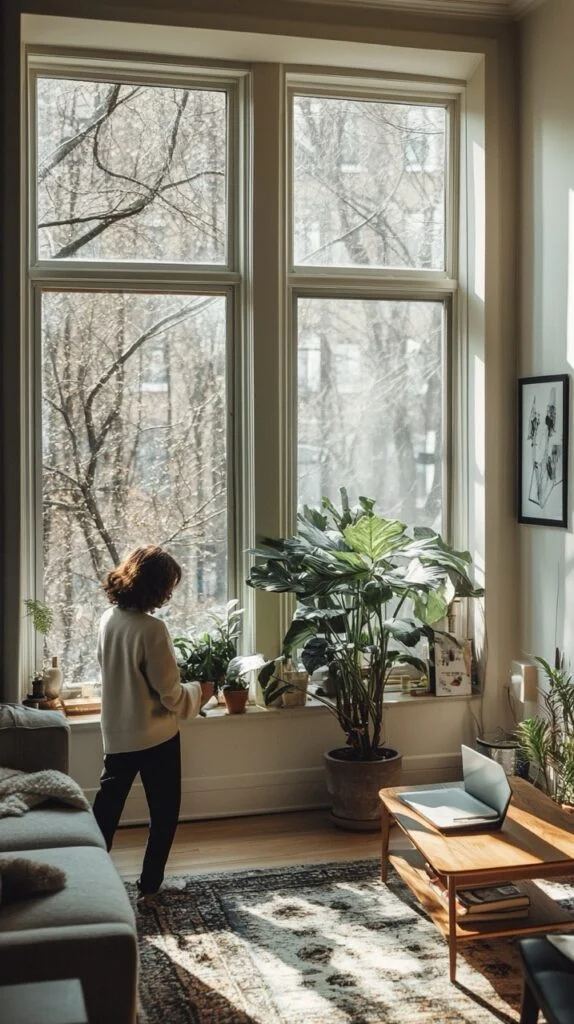
Bedroom
You might want to move on to the bedroom now. After all, we spend a heck of a lot of time in there and it’s a space that’s meant to promote rest and relaxation. Clear out under-bed storage, get rid of items you no longer need. Organise bedside tables, keeping only essentials like a lamp, the book you’re currently reading, maybe a small plant or candle if you have room and that’s your thing. Sort through jewellery and accessories, donating or selling pieces you no longer wear.
Kitchen
In the kitchen, I always like to start by clearing out anything that’s expired from the pantry and refrigerator. It’s a quick and easy way to reclaim some space. Then you could organise utensils and cookware. Have duplicate items, or appliances you never use but are in great shape? Maybe a neighbour would like them, or maybe they’re worth listing on Facebook Marketplace.
Personally, I prefer decluttered countertops myself, and I only leave appliances out that I use daily. You could equally consider creating designated spaces for items you use frequently to make your kitchen more functional.
Bath
The bathroom is often overlooked in decluttering efforts, but it’s an important space to address. Dispose of expired medications and cosmetics, which can be harmful if used past their expiration date. Organise toiletries, keeping only products you actually use. Clear out under-sink storage, getting rid of old cleaning supplies or products you no longer need. Keep in mind that even weird things like tampons, bleach, shaving cream and even toilet paper have expiry dates. Check out my in-depth post about doing a big bathroom declutter and how to check expiration dates.
Home Office
Finally, declutter your home office or the nook you use to work. Sort through paperwork (this is a great organising activity for hot summer days btw), and shred or recycle documents you no longer need. Organise your drawers, or organise your desk if it has no drawers. I like using dividers to keep small items tidy.
When you have a longer pocket of time, go through the digital files on your computer and see if you’re happy with things. If not, you might want to create a more logical folder structure and delete unnecessary files.

Depending on your living situation, you might have other areas to tackle like a garage, attic, guest bedrooms, family room, or shed. These spaces often become dumping grounds for items we’re not sure what to do with, so be prepared to make some tough decisions about what to keep and what to let go.
Cheat Sheet
Very generally speaking, these quick questions to ask yourself when decluttering are super helpful in deciding what to keep and what things to throw away (or donate, or re-sell):
- Do I love it?
- Do I use/wear it?
- Will I need it/wear it soon?
Tackling Common – But Tricky – Clutter Hotspots
Some areas require special attention due to their tendency to accumulate clutter. Your wardrobe, for instance, can easily become overwhelming. At least mine sure can – it’s my #1 problem zone.
The Closet
What I’ve found extremely helpful the past few years since starting Tidymalis is implementing the “one in, one out” rule: for every new item of clothing I buy, I donate or sell something from my closet. It’s definitely helping me create a more manageable wardrobe inventory.
I’m not a fan of attaching a fixed time frame to keep garments. A lot of professional organisers you see on TikTok or Instagram say to throw away stuff you haven’t worn in x amount of time. Fashion comes and goes around though. I’ve decluttered things I definitely regretted when they came back fierce years later. And I know that just because I haven’t worn something in years absolutely does not mean I will never wear it again.
What has made more sense for me is to get rid of things I know I don’t look good in, are beyond repair, or just plain don’t fit.
Whichever way you approach it, once you know what you’re definitely keeping, organise those clothes by category or colour to make it easier to find what you need.
Papers
Paperwork is another common clutter culprit. It just has a way of stacking up and seemingly reproducing itself somehow, even in our increasingly digital world. Yet many documents can be digitised and stored securely on your hard drive or in the cloud.
Invest in a good scanner or use a scanning app on your smartphone to create digital copies of important documents. Shred unnecessary papers to protect your privacy. For the remaining physical documents, create a simple filing system using labelled folders or a filing cabinet.
The Emotional Stuff
Sentimental items can be the most challenging to declutter. These objects often hold emotional value, making it difficult to let them go. However, keeping every single sentimental item is a sure-fire path to an overwhelming amount of clutter later on down the road.
How about choosing a select few items to keep? Ones that best represent the memory or person they’re associated with. For other items, consider taking photos before letting them go. I’ve done this and it’s a really great trick. If you set up a folder on your device for these old things, you can pull up the pictures anytime you feel like wallowing in nostalgia. It’s a pretty good way to preserve the memory without keeping the physical object!
Of course, you can also consider passing some items on to family members who might appreciate them. This gets them out of your way, and they’ll continue being cherished without cluttering your own space.
Notes on Digital Decluttering
Streamlining Your Digital Life
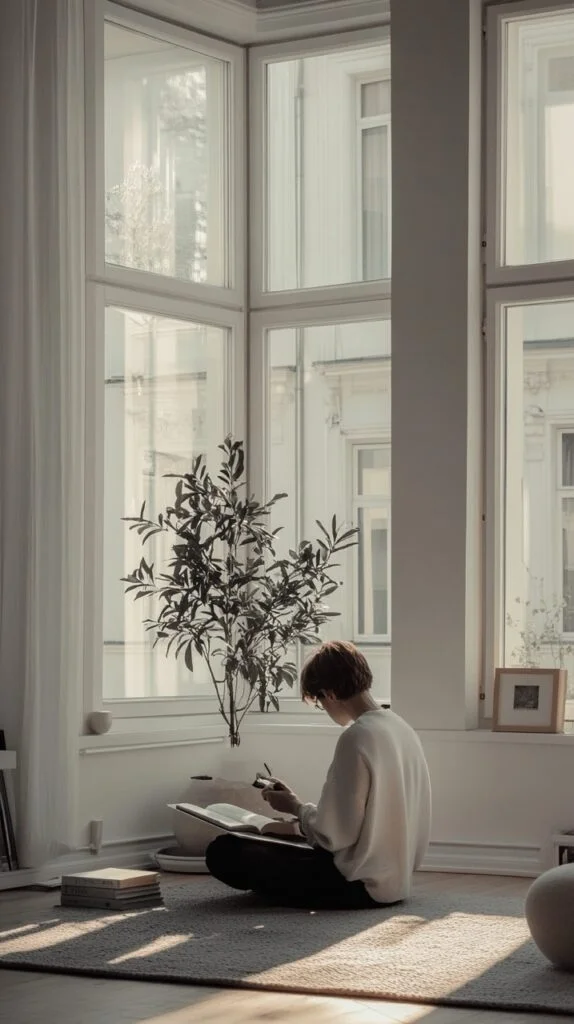
Virtual clutter can be just as overwhelming as physical clutter. A good starting point for a digital tidy-up is your email inbox, which for many people is a significant source of stress.
Unsubscribe from unnecessary newsletters and promotional emails – there are even services that can help you do this in bulk. Create folders for important emails and aim for “Inbox Zero” regularly. This doesn’t necessarily mean having no emails in your inbox, but rather having processed all emails and moved them to appropriate folders or action lists. Think GTD.
Next, tackle your computer files and folders. Delete unnecessary files, especially large ones that take up a lot of space like old movies or software you no longer use.
Organise remaining files into a logical folder structure. Use descriptive file names for easy searching later. Consider using cloud storage services to back up important files and free up space on your device. If you’re like me and don’t like the thought of keeping your life in the cloud, use SSD drives (SanDisk is my absolute favourite external drive).
Don’t forget about your smartphone and/or tablet either. Delete unused apps – many of us have dozens of apps we downloaded and never use. Organise remaining apps into folders based on their function (e.g., productivity, entertainment, finance). For photos, which can quickly accumulate and take up a lot of storage, back them up to a cloud service or your SSD, and delete duplicates or bad shots from your device.
Finally, you may want to consider your social media accounts whilst you’re at it. Go ahead and unfollow accounts that don’t bring value to your life, or “influencers” who make you feel bad. Limit the time you spend on social media – many smartphones now have built-in features to help with this. You might even consider a social media detox to take a little break from these platforms for a set period to reassess their role in your life. Maybe you won’t want to go back to them, you never know.
Digital Habits to Cultivate
Developing healthy digital habits definitely helps you maintain a decluttered digital life. You can practice digital minimalism by being intentional about your technology use. Before downloading a new app or signing up for a new service, ask yourself if it’s really going to add value to your life.
Setting specific times for checking emails and social media, rather than constantly throughout the day, might also work for you. For some, it helps reduce the mental clutter caused by constant notifications and context switching. There are even apps that block distracting websites during work hours to help you stay focused, not to mention a slew of mindfulness and meditation apps to help you unwind and fight stress.
Make it a habit to regularly review and clean up your digital spaces. Just as you might do a seasonal declutter of your physical spaces, schedule regular digital decluttering sessions. I usually go through this list on a quarterly basis. I’ll check for old or redundant files, clear out the downloads folder, update my online profiles, delete stuff. It’s not perfect, but it helps keep it all in check.
Mental and Emotional Decluttering Tips
Thoughts and head stuff on a declutter your life checklist? Yup. Cluttered thoughts are a real thing and deserve to be mentioned.
Clearing Mental Clutter
Let’s be honest: mental clutter can be just as overwhelming as its physical counterpart. Stress reduction techniques are a key part of mental decluttering. Practice deep breathing exercises throughout the day, especially when you feel overwhelmed. Try progressive muscle relaxation, tensing and then relaxing each muscle group in your body, to release physical tension that often accompanies mental stress. And at the risk of beating a dead horse: just do some regular physical exercise. Even if it’s only walking, it’s been shown to reduce stress and improve overall mental health.
Mindfulness and meditation practices can be powerful tools for clearing mental clutter. You could start with short, guided meditations if you’re new to the practice. I try to practice mindfulness in daily activities by fully focusing on what I’m doing in the moment, whether it’s eating, walking, or even brushing my teeth. It helps tone out the mental chatter that sometimes makes me feel overwhelmed.
Journaling is another super effective strategy for mental decluttering! Try writing morning pages – three pages of stream-of-consciousness writing first thing in the morning. This can help clear your mind and set a positive tone for the day. Or keep a gratitude journal, writing down three things you’re grateful for each day before you go to bed. This practice can help shift your focus from stressors to positive aspects of your life. Use journaling prompts to explore your thoughts and feelings if you’re not sure where to start.
Emotional Decluttering Strategies
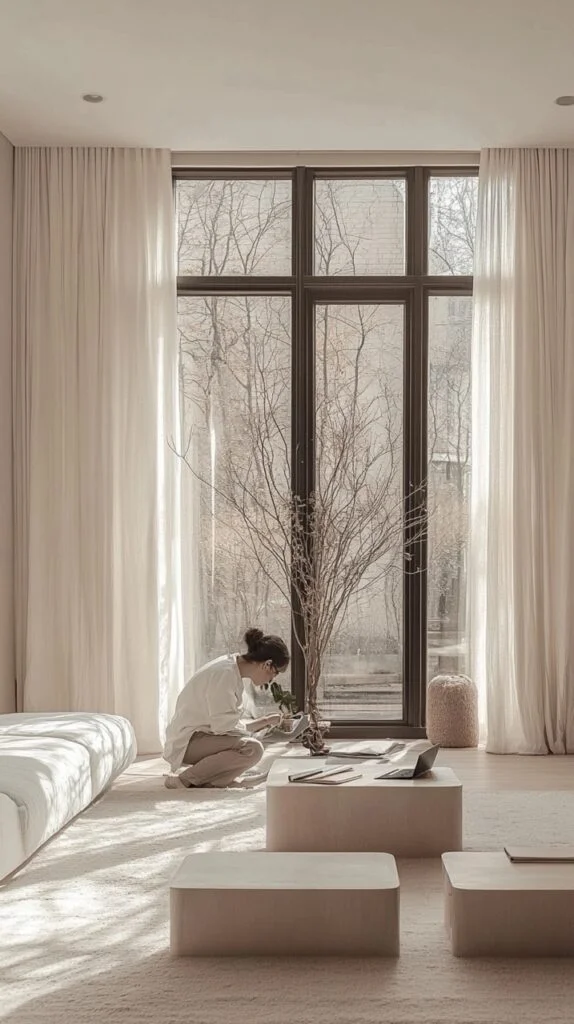
Emotional decluttering involves addressing and processing your feelings. We could fill an entire book here on the topic, so suffice it to say that it all starts with acknowledging your emotions without judgment. Often, we add to our emotional clutter by feeling bad about having certain emotions. Yet all emotions are valid, even if they’re uncomfortable.
Self-compassion is an important part of emotional decluttering. Treat yourself with the same kindness you’d offer a good friend. When you make a mistake or face a setback, respond to yourself with understanding rather than harsh criticism.
Forgiveness, both of others and yourself, is a powerful tool, too. Some coaches advise practising forgiveness meditation, where you visualise the person you need to forgive (including yourself) and mentally repeat phrases of forgiveness. Or you could write a letter of forgiveness. You don’t have to send it, but the act of writing can be cathartic.
Cultivating gratitude can help clear emotional clutter by shifting your focus to the positive aspects of your life. I like the daily gratitude log I mentioned further above, where you write down three things you’re grateful for each day. These can be big things, like a supportive relationship, or small things, like a delicious snack I had somewhere. They’re things that make me feel good before I fall asleep.
Finally, we all too often forget to express appreciation to others regularly. That’s a shame because not only does it strengthen your relationships, but it also reinforces positive emotions in your own mind. Next time you think something good of someone, tell them.
Nurturing Meaningful Connections
Assessing Your Relationships
Part of decluttering your life involves evaluating your relationships. Look for signs of toxicity in your relationships, such as constant negativity, manipulation, or lack of reciprocity. Consider how you feel after interacting with certain people – energized and uplifted, or drained and negative?
Be honest with yourself about which relationships might be adding unnecessary stress or negativity to your life. But be fair, too. I’ve written elsewhere about the detrimental effects of toxic positivity, and it’s a topic I still feel strongly about. Life is not all #goodvibes. It goes up and down, and a good relationship should be able to take the bad with the good. In sickness and in health, you know?
Setting Boundaries
Learning to say ‘no’ is a crucial skill if you want to have healthy boundaries in your life. Practice saying no to requests that don’t align with your priorities or values. Use “I” statements to express your needs clearly, such as “I need some time to myself this weekend” rather than “You’re always asking me to do things.” Remember that saying no to others often means saying yes to yourself and your own needs.
Time Management: Decluttering Your Schedule
Prioritising Tasks
Effective time management is a crucial part of decluttering your life. One useful tool is the Eisenhower Matrix, which helps you prioritize tasks based on their importance and urgency:
| Urgent | Not Urgent | |
|---|---|---|
| Important | Do First | Schedule |
| Not Important | Delegate | Eliminate |
Use this matrix to categorize your tasks and focus on what’s important:
- Tasks that are both important and urgent should be done first.
- Important but not urgent tasks should be scheduled.
- Urgent but not important tasks can often be delegated, while tasks that are neither urgent nor important can be eliminated.
Time-blocking is another effective technique. Assign specific time blocks for different tasks throughout your day or week. Include breaks and buffer time between tasks to avoid feeling stressed out. Review and adjust your time blocks regularly based on your changing needs and priorities.
Eliminating Time Wasters
Identifying and reducing unproductive activities can free up rather large chunks of time in your schedule. The best way to find them is to track your time for a week to identify where it’s being spent. You might be surprised at how much time is lost to activities like scrolling on social media or watching Netflix.
Once you’ve found your time wasters, you can take steps to limit them. If TikTok is your problem, set specific times for checking social media and stick to them. Use apps that block distracting websites during work hours. Batch similar tasks together for efficiency – for example, do all your email checking and responding at set times rather than constantly throughout the day.
Learn to delegate tasks when possible, both at work and in your personal life. This might mean assigning chores to family members, outsourcing certain tasks, or asking for help when you need it. We often forget that delegating isn’t a sign of weakness. It’s a smart way to manage your time and energy.
Financial Decluttering
Organising Your Financial Life
Financial messes can cause your cortisol to skyrocket, I know. You could start the decluttering process here by creating a budget which accurately reflects your real income and expenses.
Use apps like YNAB (You Need A Budget) or Mint to track your spending. These tools can categorize your expenses automatically to give you a clear picture of where your money is going. Once you’ve got it set up, review your budget regularly and adjust as needed.
In conjunction with paperwork discussed further above, it’s important to shred any financial statements when you go to declutter your financial documents. There’s just too much identity theft these days.
For the paperwork you absolutely must keep in hard copy, create a simple filing system with clearly labeled folders, binders, or a small filing cabinet. Try to keep only what you need – in general, tax documents should be kept for seven to ten years in most locales, while most other financial documents can often be discarded after a year. When in doubt, make a digital scan as your backup.
Minimising Financial Commitments
Reducing financial obligations can provide more freedom and less stress. Start by listing all your recurring payments, including subscriptions and memberships. Cancel services you don’t use or need – that gym membership you haven’t used in months or the streaming service you rarely watch. For services you do want to keep, you could look for cheaper alternatives or consider sharing accounts with family members if it’s allowed.
Bill payments are super easy to simplify: just set up automatic payments for your regular bills. This reduces the mental clutter of remembering payment dates and helps avoid late fees.
If you have multiple debts, consider consolidating them to reduce the number of your payments and potentially reduce interest rates. Don’t be afraid to negotiate with service providers for better rates, especially for services like cable, internet, or cell phone plans!
Practical Tips for Working Through Your Declutter Your Life Checklist
Your declutter checklist shouldn’t create additional stress. So start small by choosing one area or aspect of your life to focus on. This might be a single drawer, your email inbox, a bad friend, or a particular time-wasting habit. By starting small, you’ll build momentum and confidence for bigger decluttering tasks.
Celebrate the small wins, too. Each decluttered drawer or simplified process is a step towards your goal of a simpler life. Acknowledge these achievements to stay motivated!
Create sustainable habits by incorporating decluttering in your daily routine. This might mean spending 10 minutes each evening tidying up, unsubscribing from one email list per day, or doing a weekly review of your schedule and to-do list.
Be patient with yourself throughout this process! Getting organised is not a one-time event, but an ongoing journey. As with everything, there will be setbacks and challenges along the way.
Download your free PDF declutter checklist
Three pages, fillable and printable.
Conclusion
Decluttering your life is a journey that extends far beyond organising physical spaces. With a framework like the declutter your life checklist I’ve outlined today, you can simplify pretty much any facet of your life, from your living space to your digital persona, your relationships, mind, and finances. It’s worth keepin in mind that the goal is not perfection, just baby steps towards a simpler, more fulfilling life.
What about you? Share your tips, challenges, and successes in the comments below. And don’t forget to download our printable declutter checklist to help you start decluttering and stay on track.
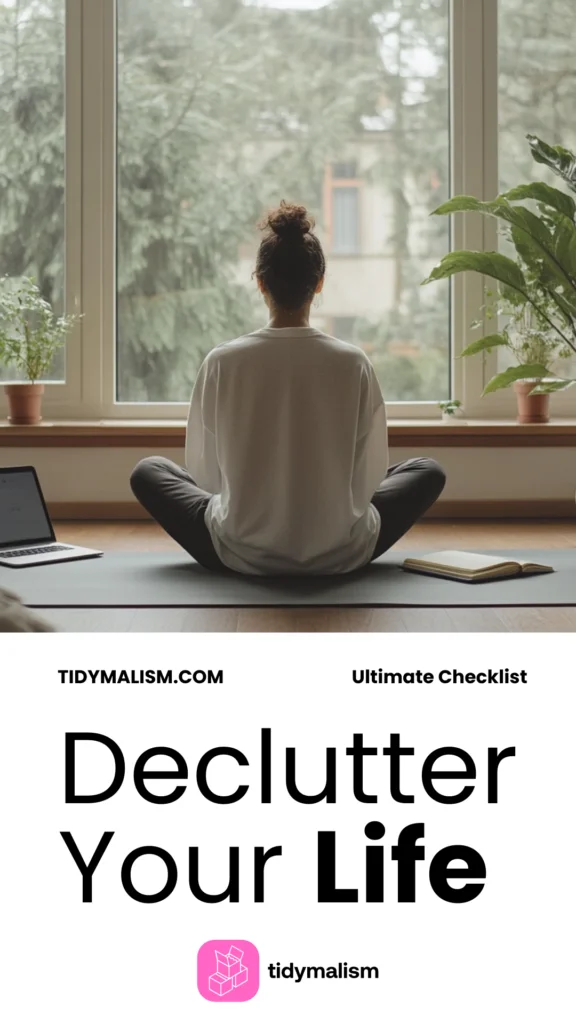

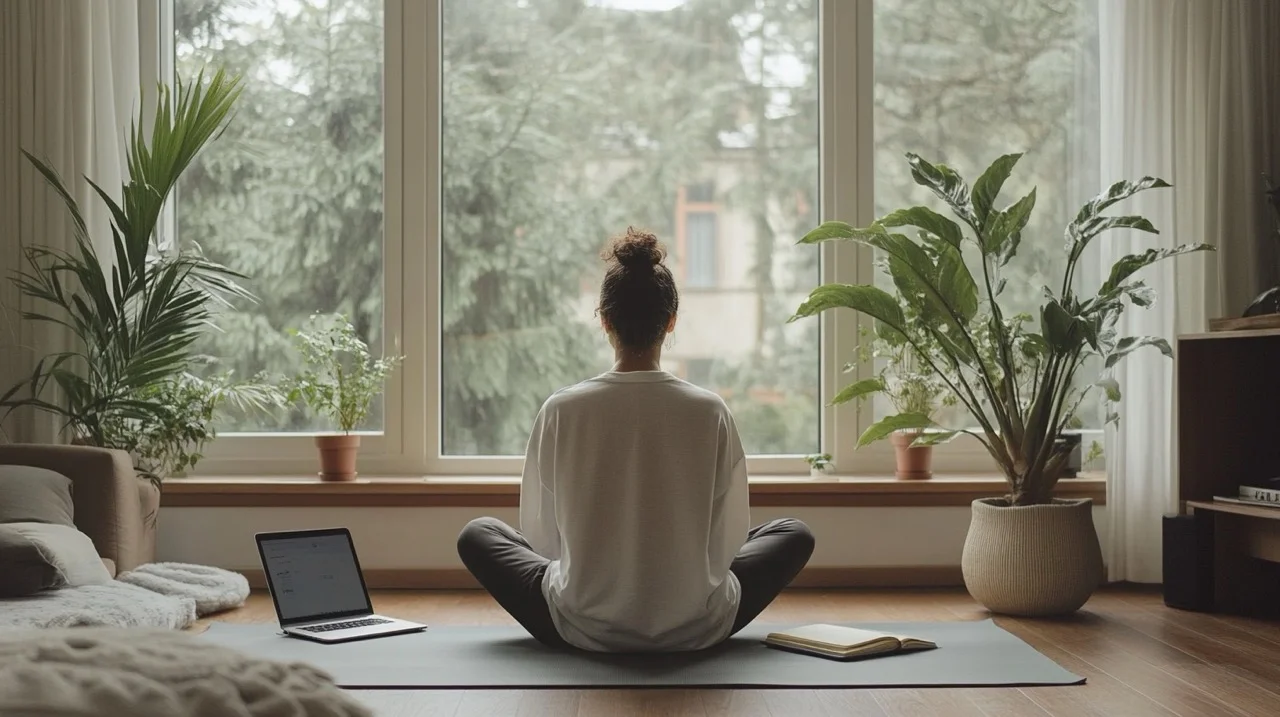















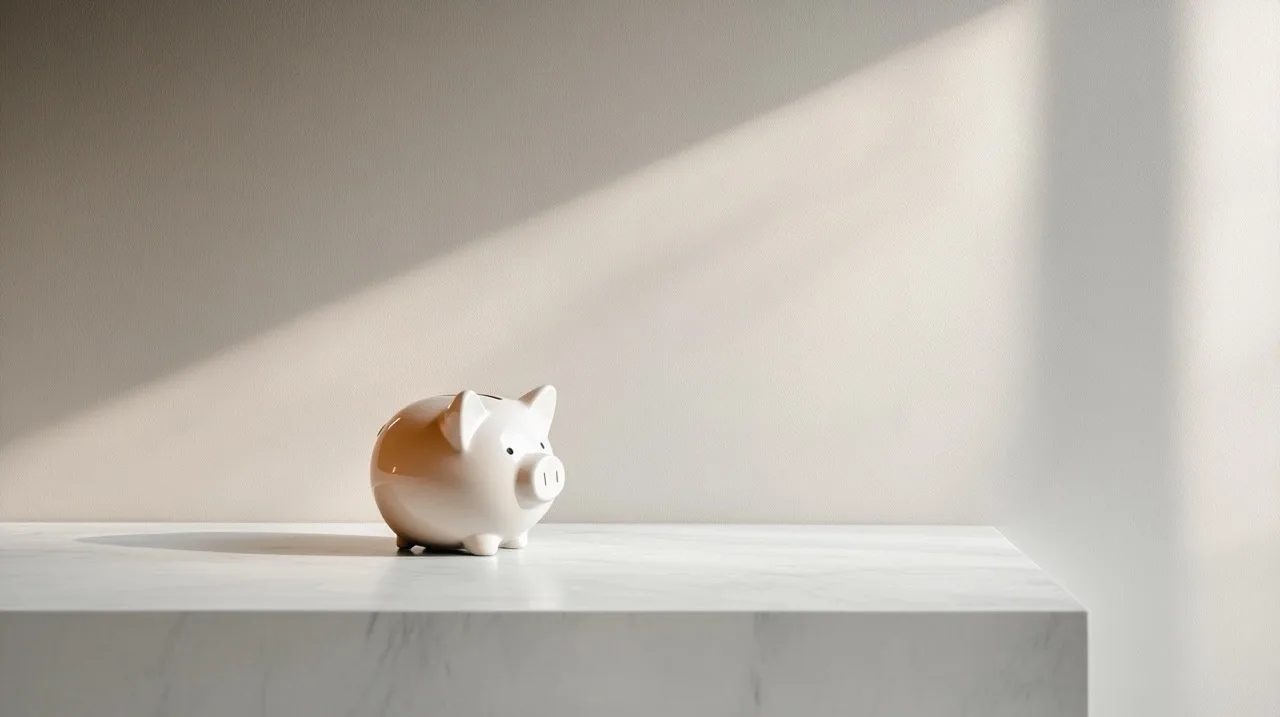


Leave a Reply